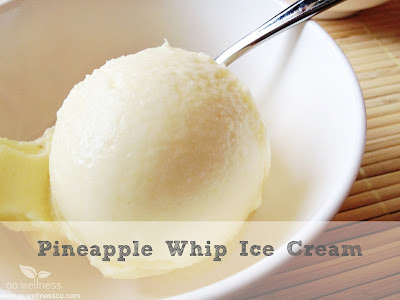 |
| Does frozen yogurt deserve its health halo? - Copyright 2013 - Michelle Loy, MPH, MS, RD, CSSD - Go Wellness |
Over the last few years, the rise of the FroYo has been occurring with the growing popularity of frozen yogurt shops and frozen yogurt products on grocery store shelves. People seem to be flocking to frozen yogurt as a healthier alternative to ice cream, but unfortunately, in some cases, it may not be all that we believe it to be.
- While frozen yogurts are generally lower in fat and calories than their ice cream cousins, it doesn't mean they are "low calorie". For example, I decided to compare Ben and Jerry's Cherry Garcia FroYo with their Cherry Garcia Ice Cream. The ice cream has 240 calories and 13 grams of fat per 1/2 cup serving while the FroYo has 200 calories and 3 grams of fat per serving. So yes, the frozen yogurt is lower in calories and fat. However, it is not technically a "low-calorie" food since it does not contain less than 40 calories per serving required by federal labeling guidelines. Add some less nutritious toppings, like cookies or candy, and you're tacking on a lot of extra low-quality calories and ingredients, too!
- Frozen yogurt may generally be lower in fat than ice cream, but it is not necessarily lower in sugar. In fact, using the Cherry Garcia example again, the frozen yogurt actually contains 1 more teaspoon of sugar than the ice cream, 27 grams vs 23 grams per half cup respectively. While some of the sugar in frozen yogurt is naturally occurring from the yogurt itself, much of it is added in the form of sweeteners, like sugar, corn syrup, high fructose corn syrup, and dextrose.
- Another reason people turn to frozen yogurt is for the proposed probiotic health benefits. Because frozen yogurt falls under a different product classification than regular yogurt, it does not have to meet the same standards in terms of the production and final product as regular yogurt. Unfortunately, not all frozen yogurts contain live and active cultures, which means they do not confer the health benefits associated with probiotics. In some cases, the yogurt is heat-treated during the production process thereby diminishing the benefits from the probiotics. Frozen yogurts also may not contain the amount or variety of probiotic strains as some regular yogurts do, and this may affect the potential health benefits as well.
- Frozen yogurts may still contain other questionable ingredients, such as artificial colors, flavors, or sweeteners, that many people are now trying to limit or avoid. For instance, some fruit-flavored frozen yogurts do not actually contain any real fruit in them. So the health benefits of the real fruit are lacking in many of these frozen yogurt products.
Consider frozen yogurts a treat like ice cream. Enjoy it occasionally, but it's best not to consider it a nourishing everyday meal or snack. There are higher quality frozen yogurts available. To make the best choices, read the Ingredient Lists and Nutrition Facts for products on grocery shelves and check out the nutrition information online for versions from yogurt shops. Look for frozen yogurts with simpler ingredient lists that also include live active cultures. When opting for FroYo from yogurt shops, stick with healthier toppings, like fresh fruit and nuts, rather than cookies or candy, and consider portion size, especially with self-serve spots.
If you enjoyed this article, please "like" it, "pin" it, and share it!








